9 Japan Style Kitchen Ideas
Japan style kitchens are the perfect fusion of Japanese minimalism and Scandinavian functionality. This design trend emphasizes simplicity, natural textures, and warm, calming spaces that feel both stylish and highly practical. A Japan kitchen is not just about aesthetics—it’s about creating a balanced environment that supports mindful living.
If you’ve been searching for fresh ways to bring Japan charm into your kitchen, these 9 Japan style kitchen ideas will guide you with timeless inspiration.
1. Keep a Neutral Color Palette
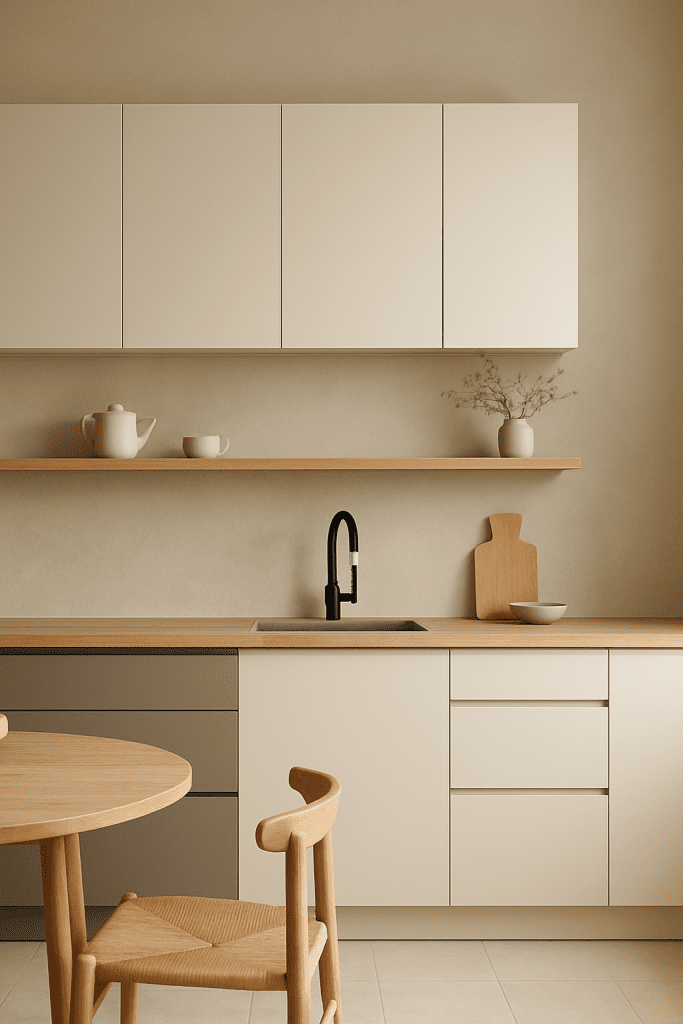
The Japandi look thrives on calm, neutral tones. Think soft whites, earthy beiges, muted grays, and warm browns. These colors create a serene backdrop that makes your kitchen feel uncluttered and open.
To add depth, you can layer slightly darker shades like charcoal or taupe through cabinetry or accents. For example, pairing matte white cabinets with light wood countertops balances Scandinavian brightness with Japanese earthiness.
You can also take inspiration from house colors exterior ideas when choosing tones that complement natural light.
2. Incorporate Natural Wood Finishes
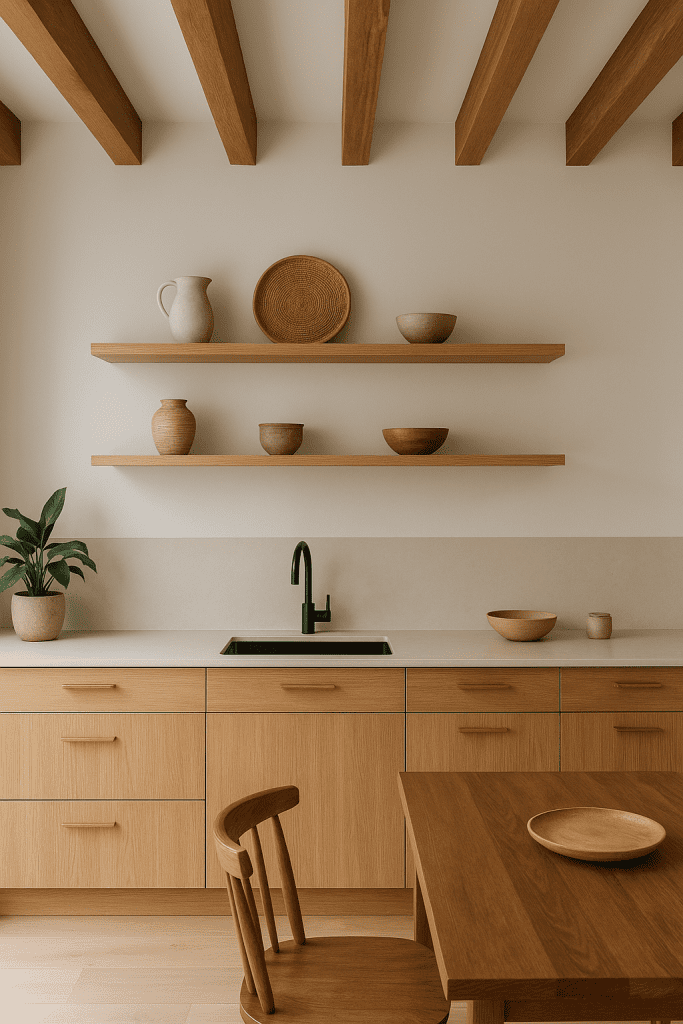
Wood is central to both Japanese and Scandinavian design. A Japandi kitchen often features light oak, ash, or walnut cabinetry that introduces warmth and organic texture.
Natural wood can be incorporated in:
- Cabinets and drawers
- Floating open shelves
- Wooden ceiling beams
- Dining tables or breakfast bars
Consider mixing light Scandinavian woods with darker Japanese ones for a striking yet harmonious contrast.
For more styling inspiration, check out our guide on house plants ideas that pair beautifully with wood finishes.
3. Opt for Open Shelving
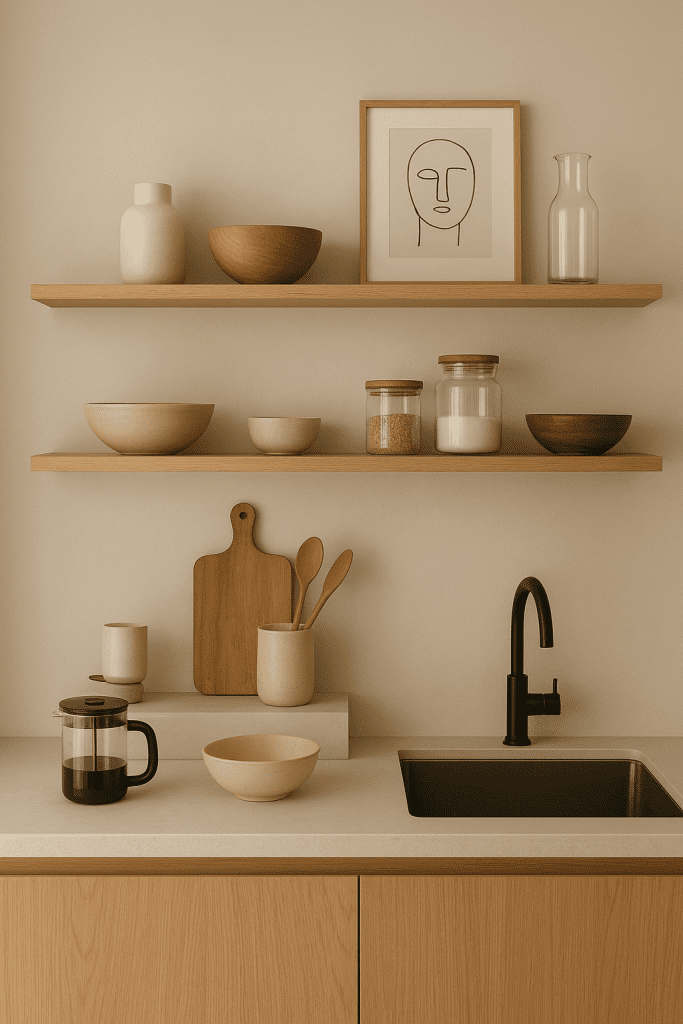
Minimalism doesn’t mean sterile—it means intentional. Instead of heavy cabinetry, Japandi kitchens often use open shelving to display carefully chosen items like ceramics, wooden bowls, or glass jars.
This not only keeps your kitchen airy but also adds a personal touch. Just remember the Japandi principle: less is more. Avoid overcrowding shelves, and instead display a few meaningful items that spark joy.
For a more artistic take, you can explore gallery wall ideas to style open shelving with art-inspired accents.
4. Maximize Natural Light
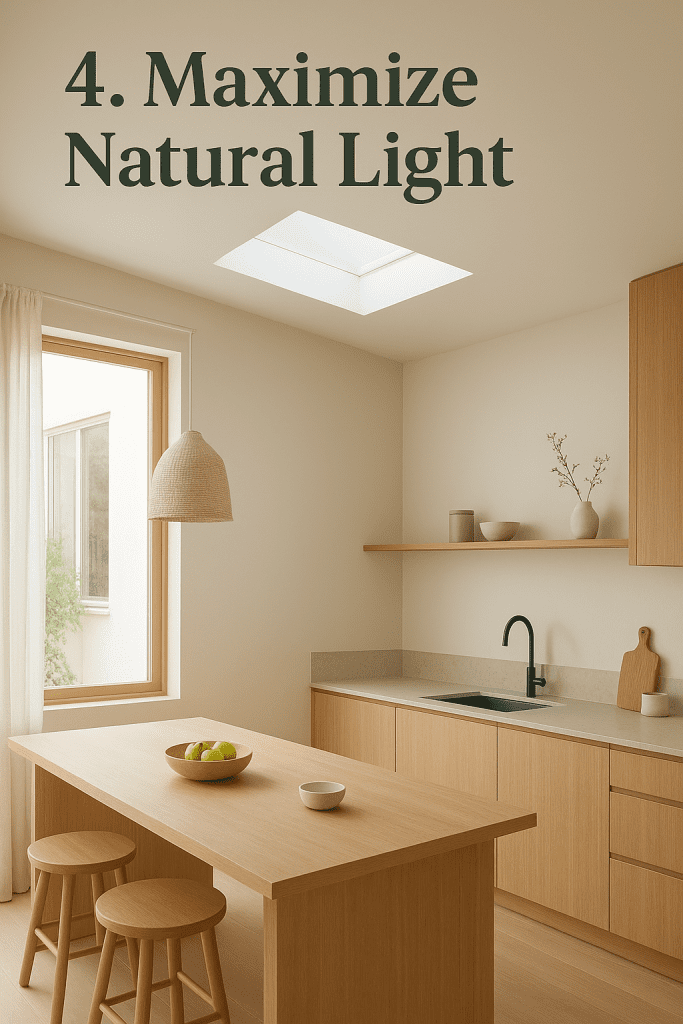
Japandi interiors embrace natural light to highlight simplicity and calm. Large windows, skylights, or even sheer curtains can help your kitchen feel more spacious.
If your space doesn’t get much sunlight, consider soft pendant lighting or under-cabinet LEDs in warm tones to mimic natural glow.
Lighting also connects with DIY mirror ideas, since mirrors placed strategically can reflect light and make the space feel even brighter.
5. Choose Minimalist Kitchen Cabinets
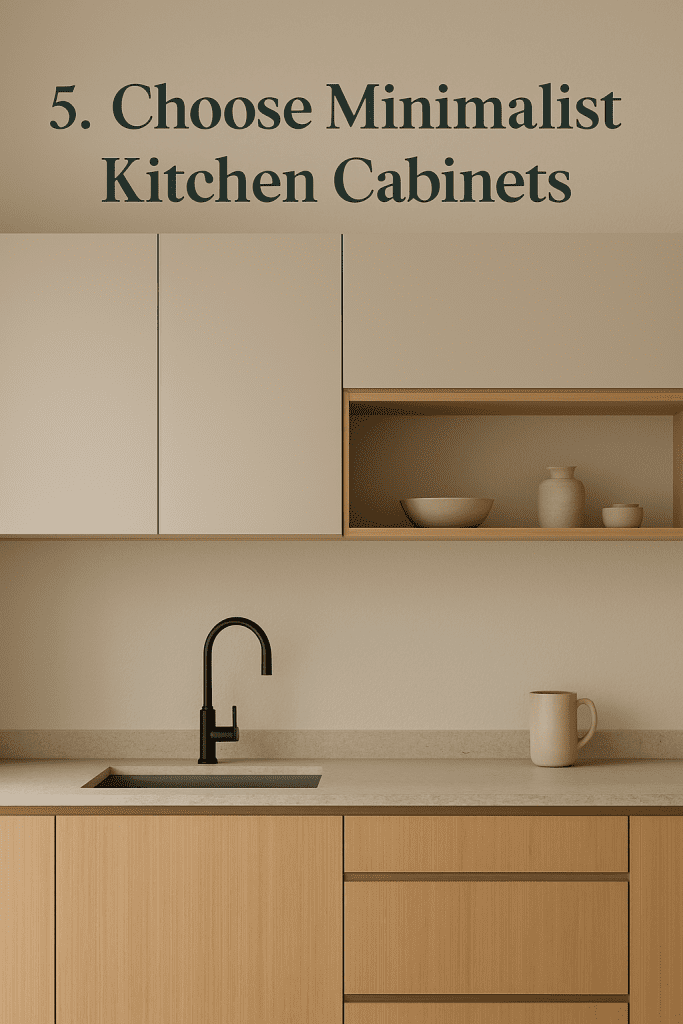
Japandi kitchens prioritize clean lines and clutter-free layouts. Sleek, handleless cabinets or those with discreet pulls keep the design minimal and elegant.
Matte finishes, rather than glossy ones, enhance the soft, understated look. Combine neutral cabinetry with open wood shelving for balance.
This idea also pairs beautifully with palace interior ideas that use symmetry and proportion to maintain flow.
6. Add Natural Textures for Warmth
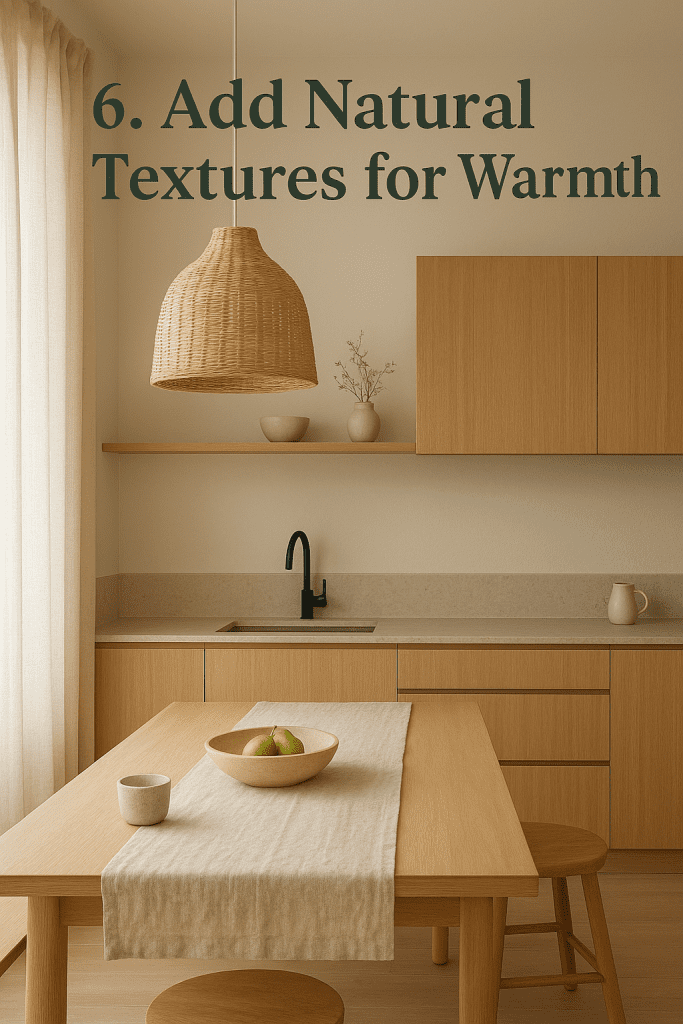
One of the best ways to prevent minimalism from feeling cold is to incorporate tactile, natural materials. In a Japandi kitchen, you can add:
- Linen or cotton table runners
- Rattan pendant lamps
- Clay or ceramic dishes
- Stone countertops or backsplash
The mix of rough and smooth textures adds character and warmth while keeping the space balanced.
If you’re styling a dining nook, you may want to layer in soft furnishings inspired by bedroom decor painting ideas for a cohesive home feel.
7. Embrace Functional Simplicity
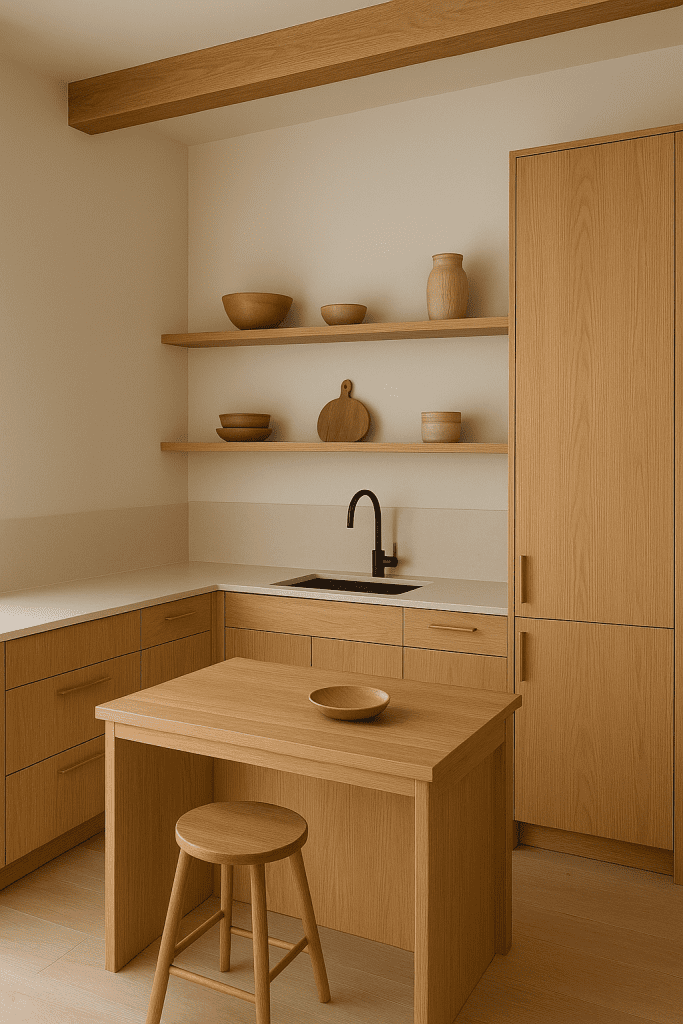
Japandi is all about practicality. This means every kitchen feature should serve a purpose. From compact storage solutions to efficient layouts, the focus is on usability.
You can integrate hidden storage, multi-purpose kitchen islands, or built-in shelving to maintain functionality without clutter.
For inspiration on efficiency and styling, check out room decor ideas diy, which show how small touches can make a big difference in usability.
8. Incorporate Greenery
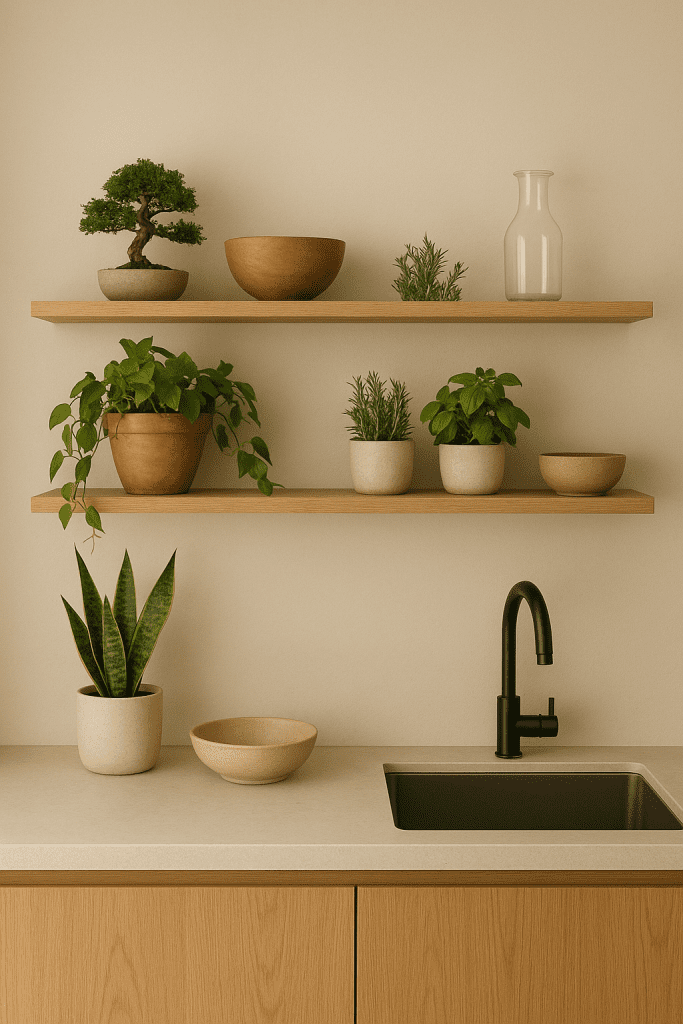
Plants bring life and tranquility into a Japandi kitchen. A small bonsai, a potted herb garden, or hanging greenery softens the minimal structure while connecting the indoors with nature.
Low-maintenance plants like snake plants or pothos thrive in kitchens, while herbs such as rosemary or basil provide both beauty and practicality.
Learn more about curating the right greenery in our house plants ideas guide.
9. Add Thoughtful Decorative Accents
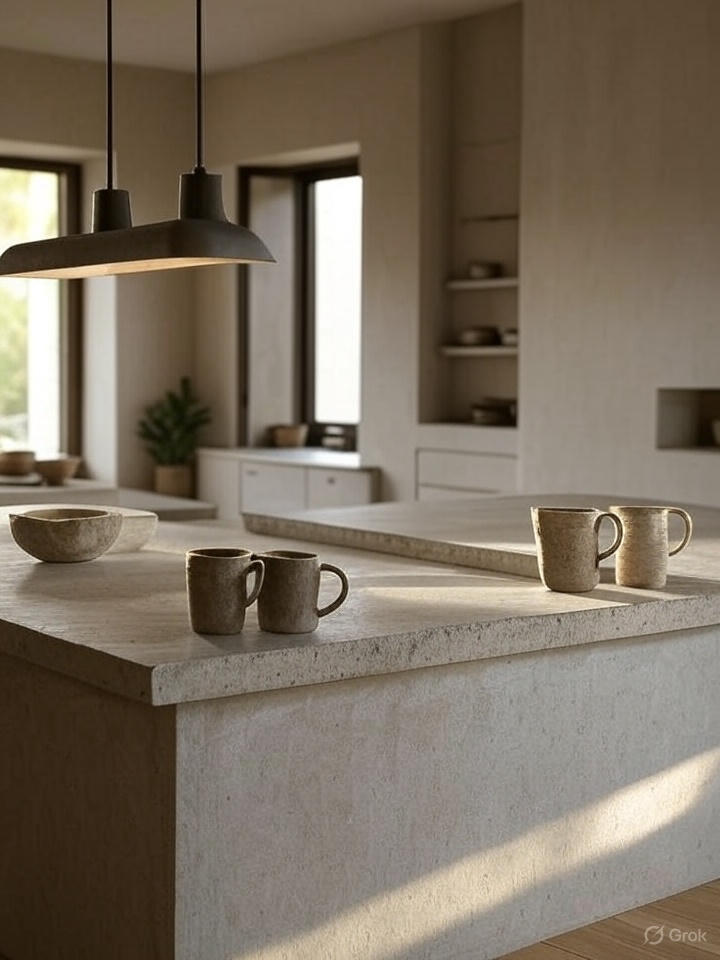
Japandi style avoids clutter, but that doesn’t mean your kitchen has to feel bare. Decorative accents should be simple, purposeful, and crafted from natural materials.
Consider:
- Handmade ceramic mugs
- Woven baskets
- Minimalist pendant lighting
- Stone serving bowls
The key is to choose fewer, high-quality items that reflect craftsmanship and authenticity.
For further styling, explore DIY mirror ideas, which can double as decorative accents while brightening the space.
Final Thoughts
Designing a Japandi style kitchen is about creating a balance between simplicity and warmth. Neutral colors, natural wood, open shelving, and thoughtful accents make the space feel calm yet welcoming. By following these Japandi style kitchen ideas, you can achieve a timeless design that blends function and serenity.
For more inspiration across your home, browse our articles on gallery wall ideas and palace interior ideas to see how balance and minimalism extend beyond the kitchen.






